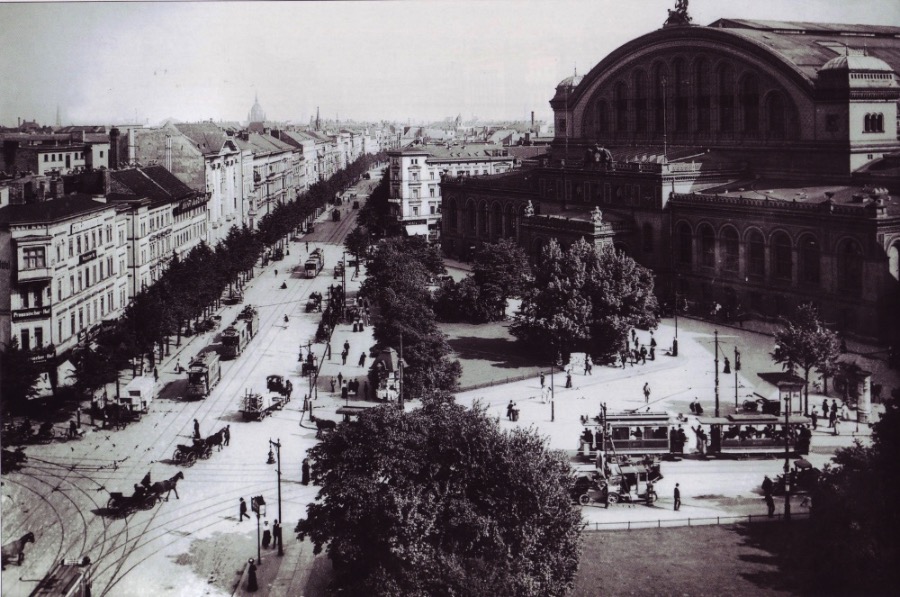When they visit Berlin for the first time, most people find time to visit the famous Checkpoint Charlie. This infamous border crossing between East and West Berlin is a classic tourist stop for people interested in the Second World War and the relationship between Communist Germany, the USSR, and the Allied Forces that controlled West Germany.
But most people don’t know that nothing you will see around Checkpoint Charlie nowadays is authentic. And we talked to many people who, like us, were disappointed after going to Kochstrasse U-Bahn for what some people call a tourist trap.
Yes, the tiny house in the middle of the street is a replica. Yes, the Russian border control tower doesn’t exist anymore.
Yes, there is a Burger King, a McDonald’s, and a Starbucks where the border crossing used to be, and you know that this is never a good sign.
But, if you are already there, where else could you go to save the trip?
We split our Checkpoint Charlie guide into 4 different areas. You can click on it below and go straight into it.
What can you do around Checkpoint Charlie?
If you want to know things to do around Checkpoint Charlie so you can save the trip you did to this place, this article is for you. We know that you shouldn’t waste your time visiting the place, and we did our research to show you how to have a good time around the area known as Friedrichstadt.
Checkpoint Charlie is located in the heart of a historical Berlin neighborhood called Friedrichstadt. Named after the Prussian king Frederick I, this neighborhood is located between Mitte and Kreuzberg, and the area started being established around 1691.
Friedrichstadt was part of the third expansion of Berlin, and the streets were designed in an unusually geometric style that wasn’t popular then. Around 1710, the area was incorporated as a part of a new Berlin. This is one of the many reasons why the area around Checkpoint Charlie is so interesting for people visiting the German capital.
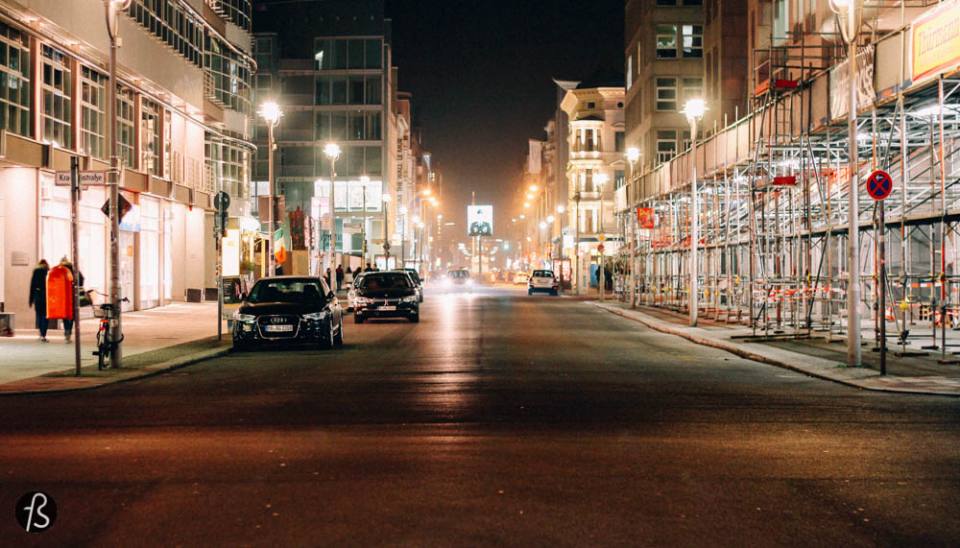

If you follow North at Checkpoint Charlie, you can do this.
Consider that you are at Checkpoint Charlie; if you start walking north, you will reach the Friedrichstrasse U-Bahn station. But we don’t want you to walk there to find something cool to do. You can do many things in the northern part of Friedrichstadt, and one of our favorite places is the beautiful Gendarmenmarkt.
Gendarmenmarket
The Gendarmenmarkt is among the most beautiful plazas in all of Europe. At the end of the seventeenth century, the square was created and got its name after the cuirassier regiment Gens d’Armes, which had stables at the court until 1773.
Today, Gendarmenmarkt is one of the most visited places in Berlin. You can see the French Church, Französischer Dom, in German, and the German Church, Deutscher Dom, in German. In the middle of the square, you will find the most recent building on the Gendarmenmarkt. Konzerthaus Berlin was built in 1821 and, together with most yards, was severely damaged during the Second World War.
Today, all of the buildings were restored to their classic beauty and can be best appreciated during the spring days, when you can even watch a concert in the middle of the square.

Shopping around Stadtmitte
Over the years, the north part of Checkpoint Charlie became a massive hub for big stores, and many people enjoy the beautiful stores you’ll find there.
From the big department store Quartier 206 to the famous Galeries Lafayette Berlin, this area of Berlin is one of the best places to shop if you have large pockets.
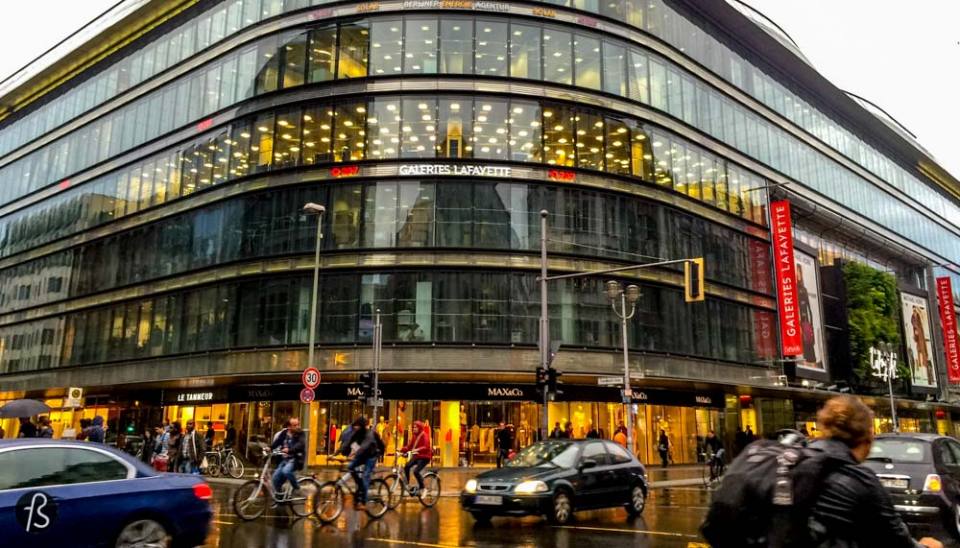
Walk around Leipziger Strasse
Leipziger Strasse is a strange part of Berlin. This street looks completely different from the picture most people have of Berlin. This happened because Leipziger Strasse was almost completely flattened during the bombardments organized and carried out by the United States Air Force in February 1945.
Leipziger Strasse was situated in East Berlin and, starting in 1969 was rebuilt as a prestigious street of a socialist capital. The road ended up with car lanes in each direction, a pedestrian underpass, and the large apartment buildings known as Komplex Leipziger Straße.
Walking around Leipzig Strasse is a unique experience. It doesn’t even look like Berlin on some parts of the street. On others, you are surprised by the beauty of the old buildings that survived the war.

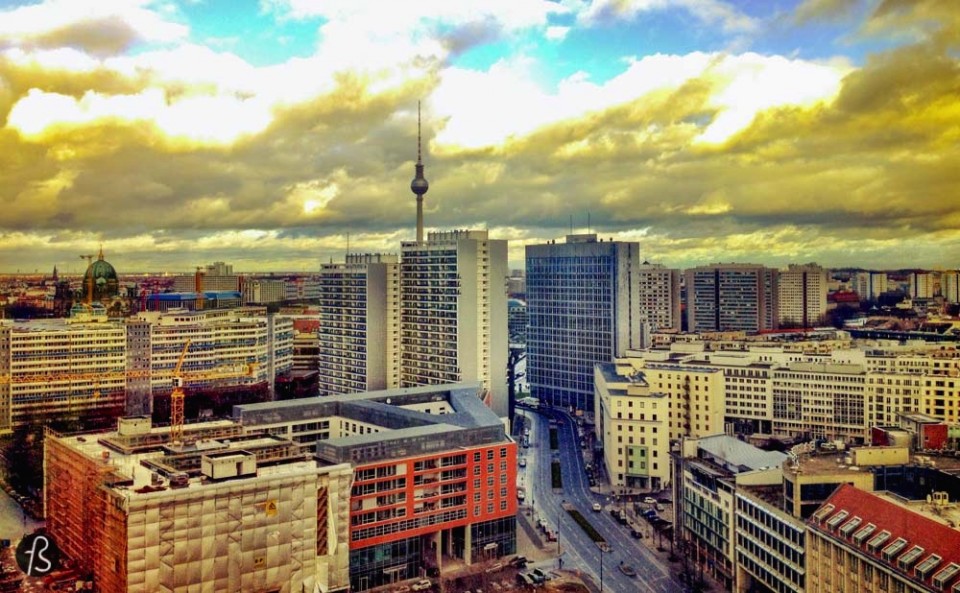
A Visit to the Museum für Kommunikation Berlin
One of the buildings that survived the Second World War on Leipzig Strasse used to be the Reichspost Ministry building.
But, today, it houses the Museum für Kommunikation Berlin. Inside this beautiful neo-baroque building, you will find the oldest collection of all things communicative.
Founded in 1872 as a postal museum, the Museum of Communications has been in the present since 1897 and is there to stay. You will see everything from old wax seals, stamps, and postcards to some of the first telephones, radios, and telegraphs there.
The collection is exciting, and this museum is way better than anything you can see at Checkpoint Charlie.
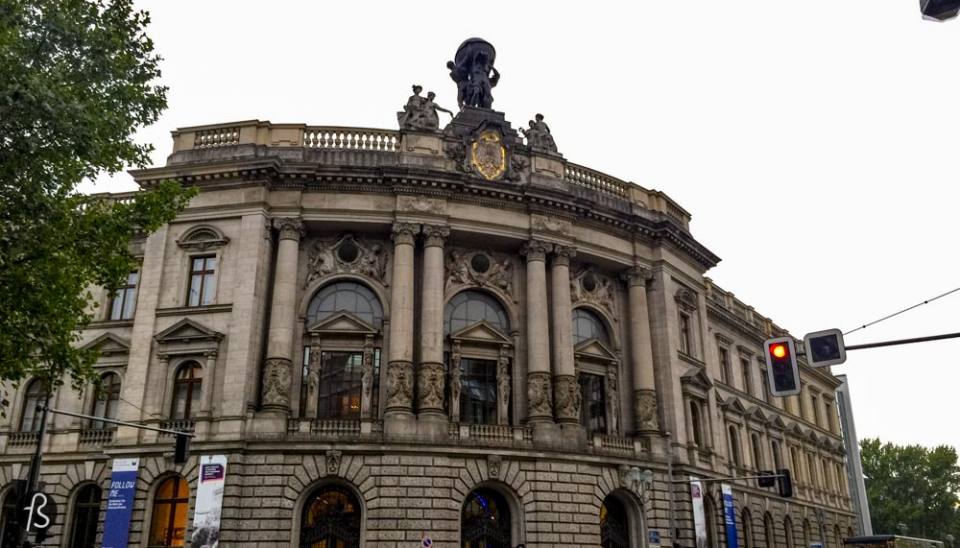

If you follow West at Checkpoint Charlie, you can do this.
Consider that you are at Checkpoint Charlie. If you start walking west, you will find yourself close to Potsdamer Platz. But you don’t need to walk there to find something cool to do around Checkpoint Charlie.
Fly Over Berlin inside the Hi-Flyer
If you follow the Berlin Wall that crosses Friedrichstraße, one of the first things you will see is the Hi-Flyer. If you can’t see it at first, you might need to look up into the sky and, maybe it will be there. This captive balloon is one of the most enormous helium balloons in the world and will show you a Berlin you can only see from up there.

The gondola goes up to 150 meters high and is secured by a cable, so you can see Berlin from an unbeatable view. From the Sony Center to the Brandenburger Tor, the idea from up there is fantastic, and you need to go up there.
A Visit to Topography of Terror
If you are afraid of heights, you need to walk a little further, and you will reach the famous Topography of Terror. The area where this museum is located was used during the Nazi regime, from 1933 to 1945, as the headquarters of the Gestapo and the SS, one of the main instruments of repression during the Nazi years.
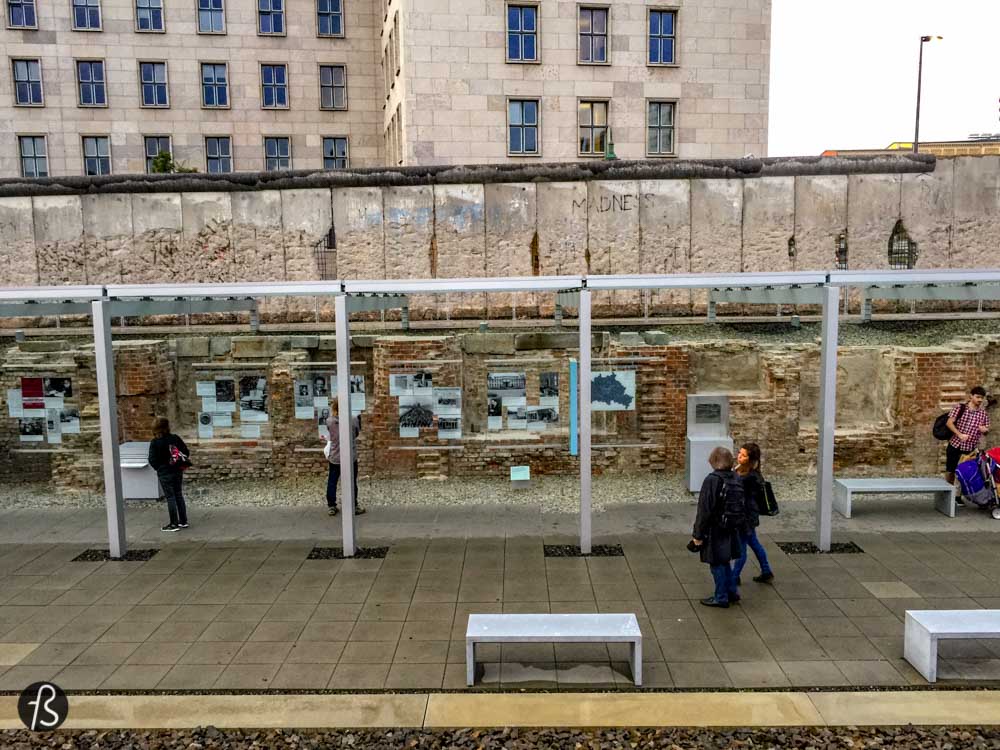
The buildings that housed the Gestapo and the SS were mainly destroyed by Allied bombing in 1945 and were demolished after the war. But nothing was built in the area since the Berlin Wall ran along the street. The wall there was never demolished, and this section is the longest extant segment of the outer wall still standing.
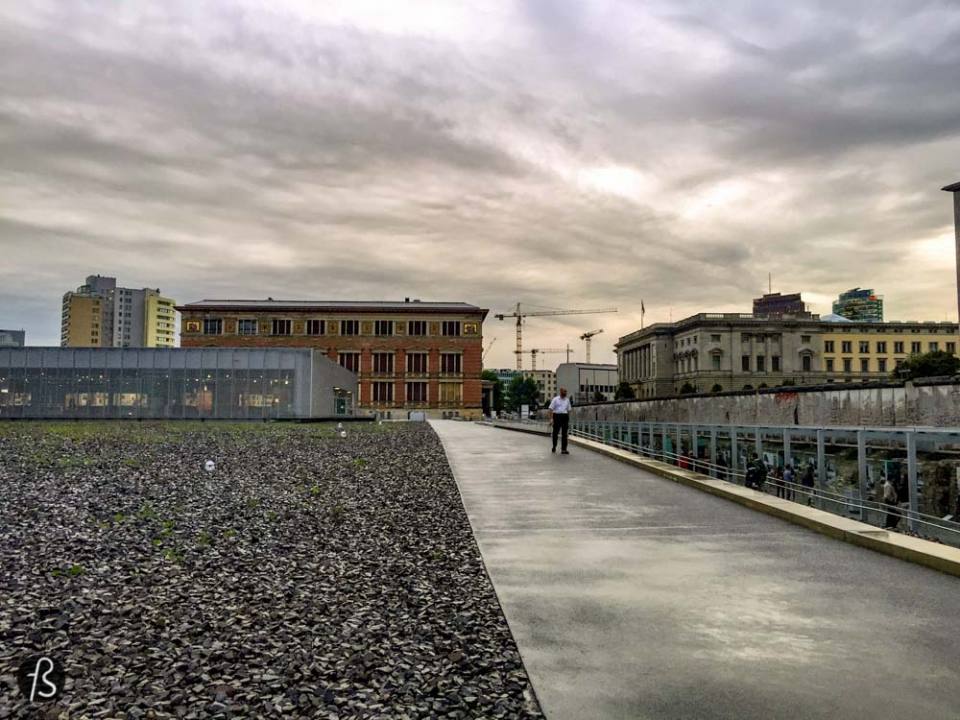
At the Topography of Terror, you are going to learn how the Gestapo and the SS used everything by their means to persecute and terrorize the Nazi regime’s many victim groups. The stories told at Topography of Terror are hard to read, but it is a visit everybody needs to endure.
Berlin Anhalter Bahnhof

To the south, you will see the remains of what was once Berlin Anhalter Bahnhof. This is where one of the biggest train stations in continental Europe used to stand.
Built-in 1839 and later extended in 1872, Berlin Anhalter Bahnhof got the nickname Gateway to the South, with train services via Dresden to Prague and Vienna and places as far away as Rome, and Athens.
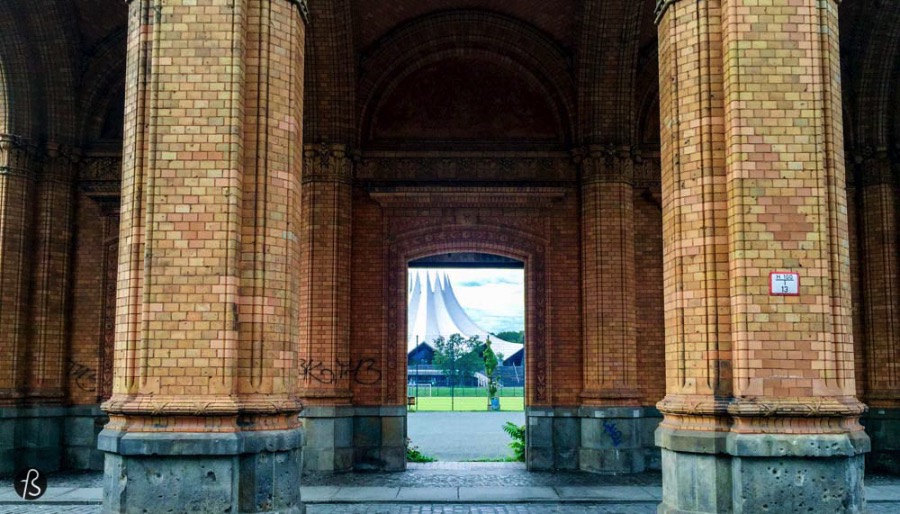
During the Second World War, Berlin Anhalter Bahnhof was one of the stations used to deport a part of the Jewish people in Berlin. From there, around 9,600 people were sent to Theresienstadt, in Nazi-occupied Czechoslovakia, and from there to concentration camps.
Today, the only thing you can see from the old train station is the center portion of the façade still looking out over Askanischer Platz. It has been restored several times since the demolition of the rest of the building back in 1960.
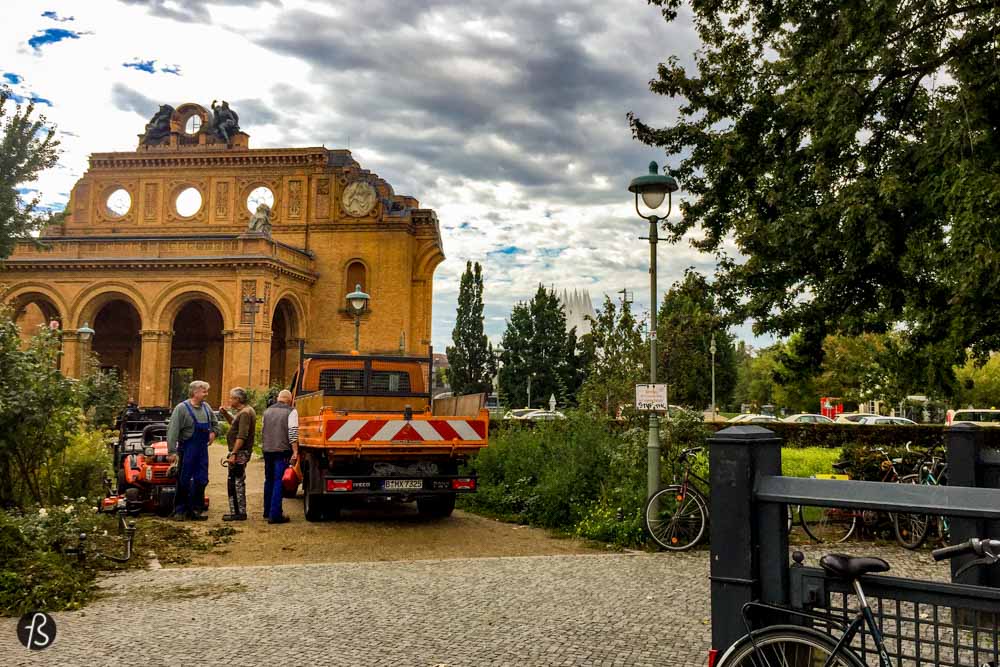
GDR Watchtower
If you will walk to Potsdamer Platz, you must stop once at the GDR Watchtower. This old defense tower stands close to where the Berlin Wall used to be and is a better example of the Cold War than Checkpoint Charlie.
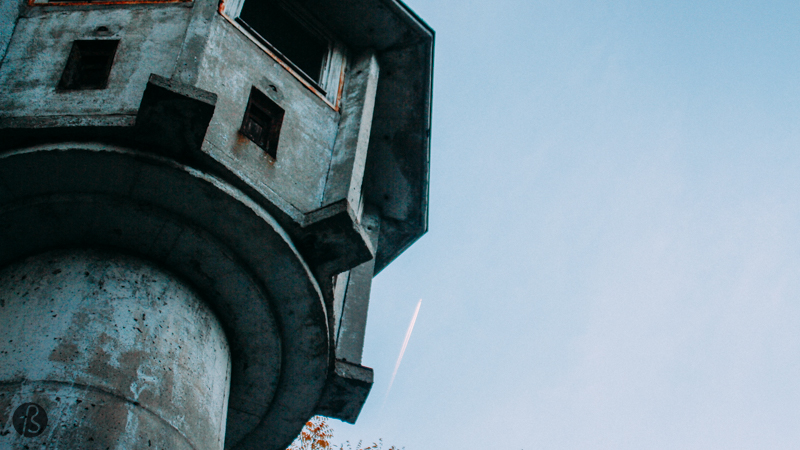
Don’t forget to enter the tower and climb to the top. Imagine how weird it is to think that the area around this GDR Watchtower was the border between two countries in a state of permanent war.
If you follow South at Checkpoint Charlie, you can do this.
Consider that you are at Checkpoint Charlie. If you start walking south, you will end up at Mehringplatz. Walking there is not a challenging task, and you will enjoy a walk into one of the most well-preserved parts of the Friedrichstadt neighborhood in Kreuzberg.
Grab a coffee at Westberlin.
Westberlin is a cafe close to Checkpoint Charlie but is not one of the many international chains crowded with tourists. Westberlin is the opposite of everything around the area. This is why you have to grab a coffee here and enjoy the free wifi and the fantastic selection of international magazines and newspapers they offer.
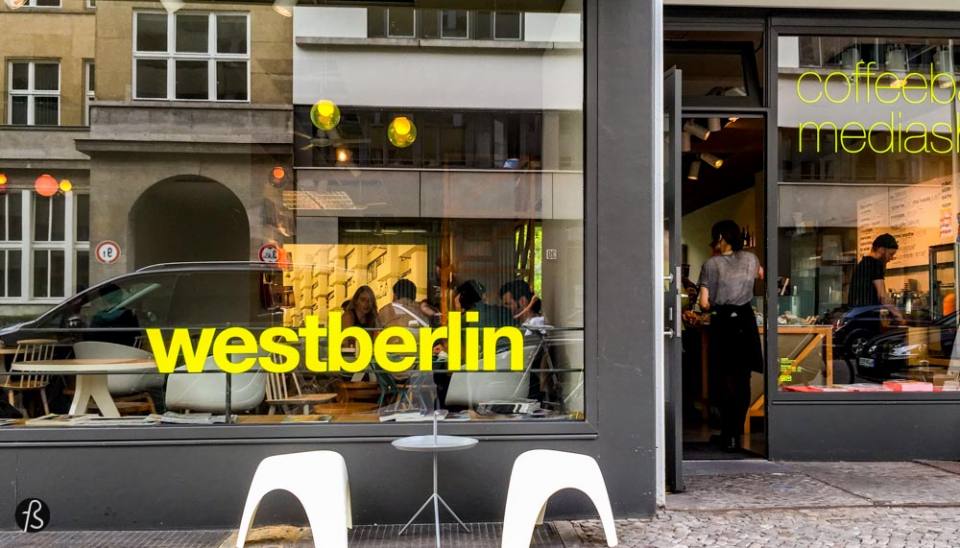
If you want a bite, go for the cinnamon bun; it seems popular, and you won’t regret it.
Walking in the Besselpark
The first green area south of Checkpoint Charlie is known as Besselpark, and it is named after the astronomer Friedrich Wilhelm Bessel, who worked at the nearby Berlin Observatory.
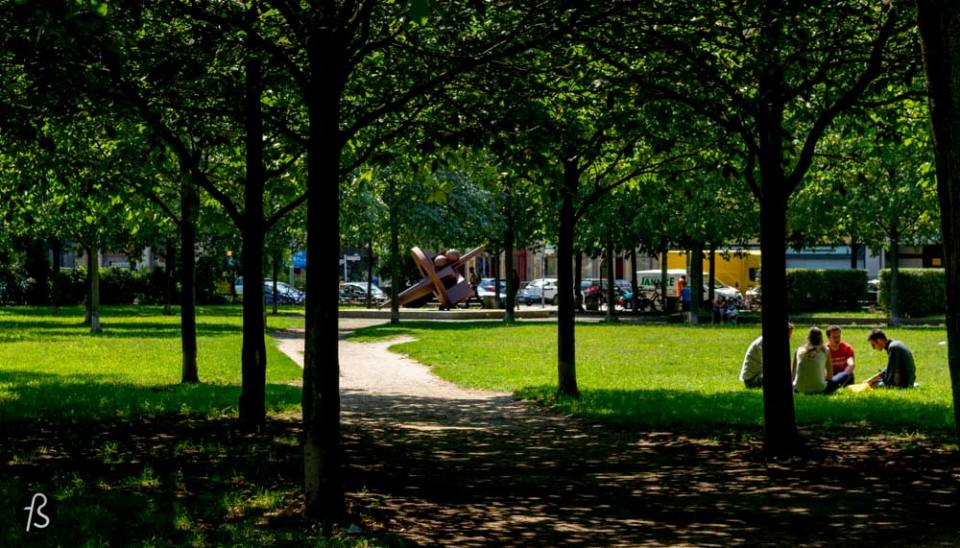
Most people who walk around the area don’t know this, but Neptune was first discovered on September 23,1846, by Johann Gottfried Galle and astronomy student Heinrich Louis d’Arrest. It is a shame that nothing in the park commemorates this discovery.
Personally, we always thought that the sculpture by Fletcher Benton located in the park served to mark the discovery, but… No. Maybe, one day, this will change.
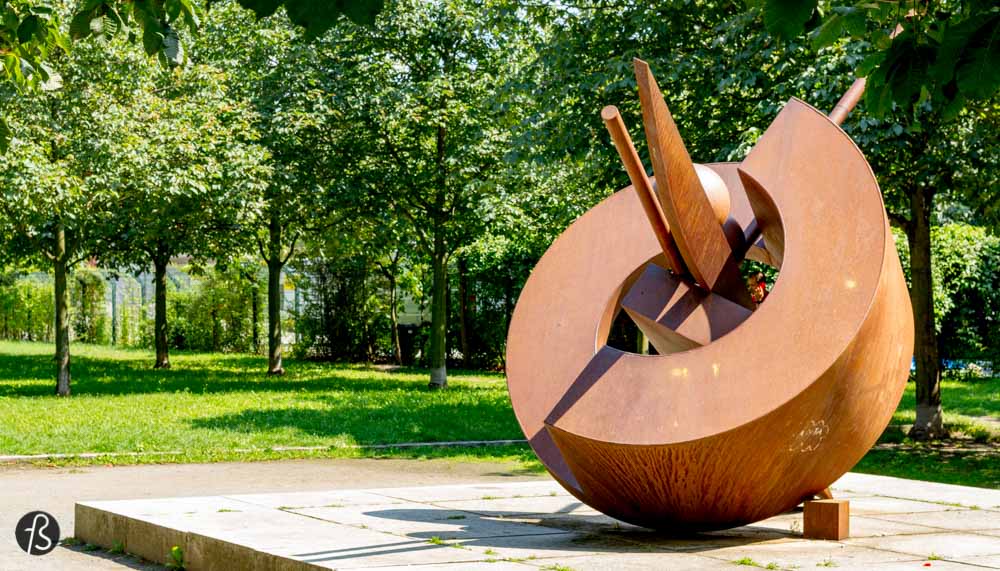
A beer at Tommy Haus
Tommy Haus is how most people know this housing collective on Wilhelmstrasse. 9 founded in March 1973. But their full name is Tommy-Weisbecker-Haus, and the name comes from Thomas Weissbecker, a terrorist from the 2 June Movement.

On the first floor, you will see Line 1, a café famous for being where Rage Against the Machine played a concert back in 1996. And you will have, at least one beer there. The café/bar has the coldest and cheapest beers you will be able to find in the area and we love going there.
Explore Mehringplatz
Belle-Alliance-Platz is what Mehringplatz used to be called in 1947 when it was renamed after Franz Mehring. This place is one of our favorite squares in Berlin, not because of how it looks today but because of its history.

Mehringplatz is one of three squares laid out in 1730 with the extension of Berlin in mind. With its round shape, it was first called Rondell. But, after the defeat of Napoleon at the Battle of La Belle Alliance, the square was renamed again.
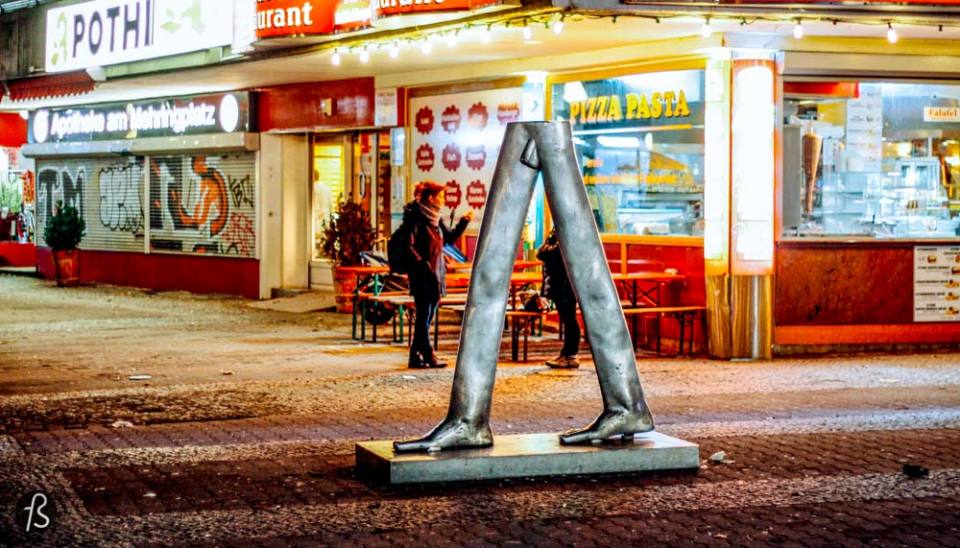
In the 1830s, the square was refurbished, including the erection of Friedenssäule, a Peace Column, and a statue of Victoria by Christian Daniel Rauch. But the area doesn’t look like it used to.
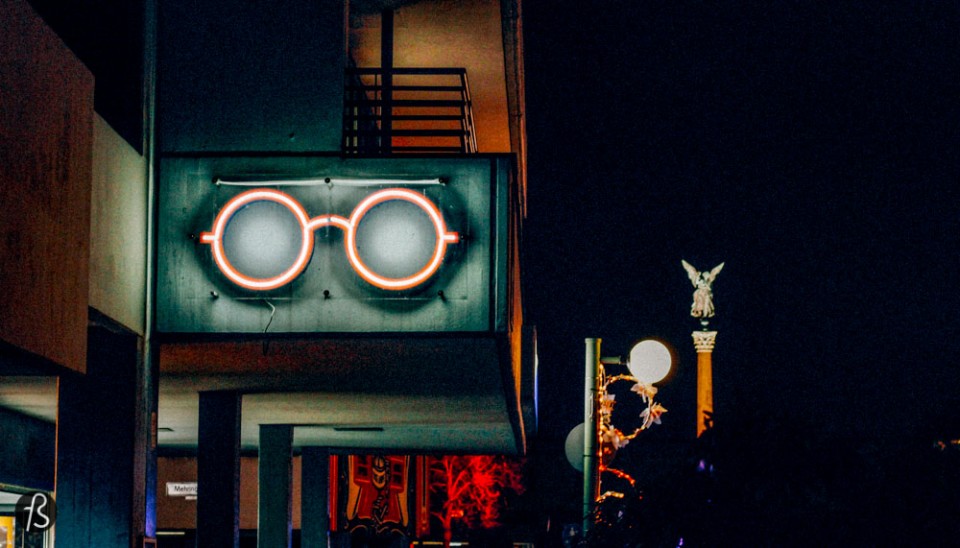
Mehringplatz was utterly devastated by Air Raids in 1945 and the following Battle of Berlin. In the 1960s, the area was redeveloped as a significant social housing area, and, during the last couple of years, it started receiving some attention because of the street art that decorates the walls of the housing blocks.

If you follow East at Checkpoint Charlie, you can do this.
Consider that you are at Checkpoint Charlie. If you start walking east, you will end up at Moritzplatz. The area between those two stops is somewhat unique since it still pays the price for being split by the Berlin Wall for so long. Most of what exists there are houses and buildings from the 60s when the area started being renovated again.
Super Ibérico
A great place to have sandwiches close to Checkpoint Charlie is the Pan Iberian restaurant and market Super Ibérico. You will find the best products from Spain, Portugal and some South American countries like Brazil there.
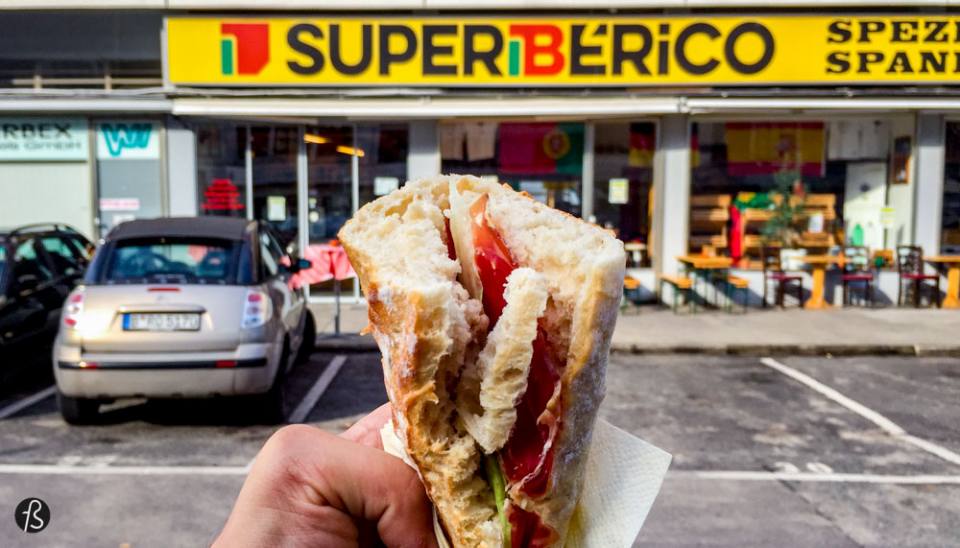
We love the sandwiches they make with Spanish ham and their amazing coffee. You should also try their brigadeiro!
Balanceakt, the Axel Springer Ballerina
Balanceakt is the name of this sculpture created by German sculptor Stephan Balkenhol. The artwork shows a man standing on an original piece of the Berlin Wall like it is trying to balance itself from falling on any of the sides.
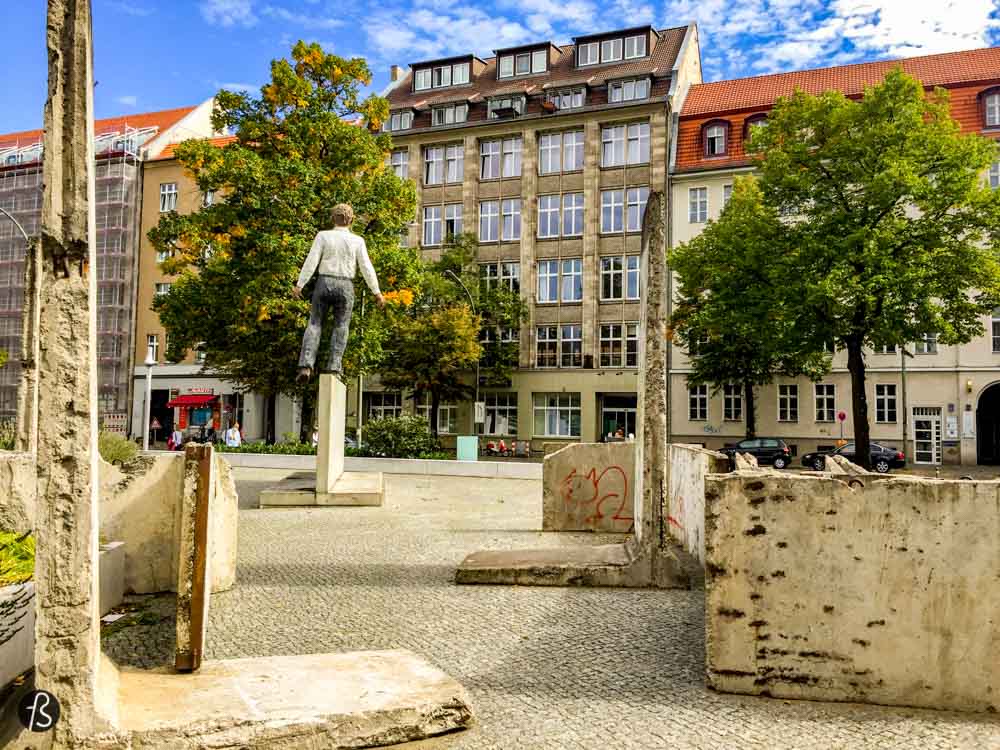
The sculpture was inaugurated in 2009 and represents the work of Axel Springer for the reunification of Germany. Lady Gaga visited the sculpture a few years ago and even imitated the statue there.
The Giant Penis Sculpture at Rudi Dutschke Strasse
One of our favorite things around Checkpoint Charlie is one of Berlin’s most bizarre landmarks. On the side of the Tageszeitung Building, you are going to see a giant penis sculpture called Peace be With You, created by Peter Lenk.
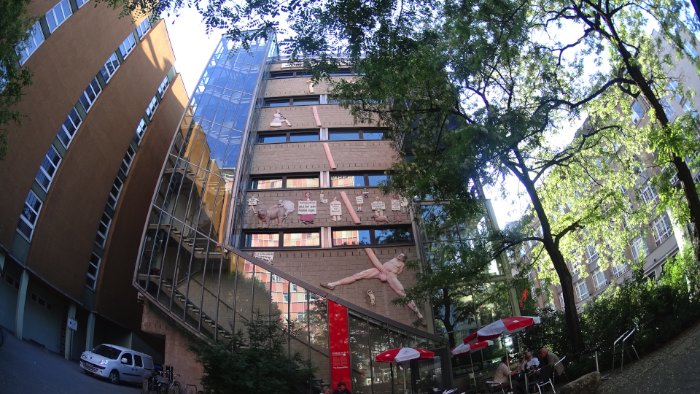
This weird installation was erected in 2009 and resembles Bild editor Kai Diekmann, whose offices are a few blocks away. We love this.
Glashaus Restaurant
Glashaus is the name of a Croatian restaurant on the corner of Lindenstrasse and Ritterstrasse. We lost count of how often we went there to eat delicious Croatian food for excellent prices.
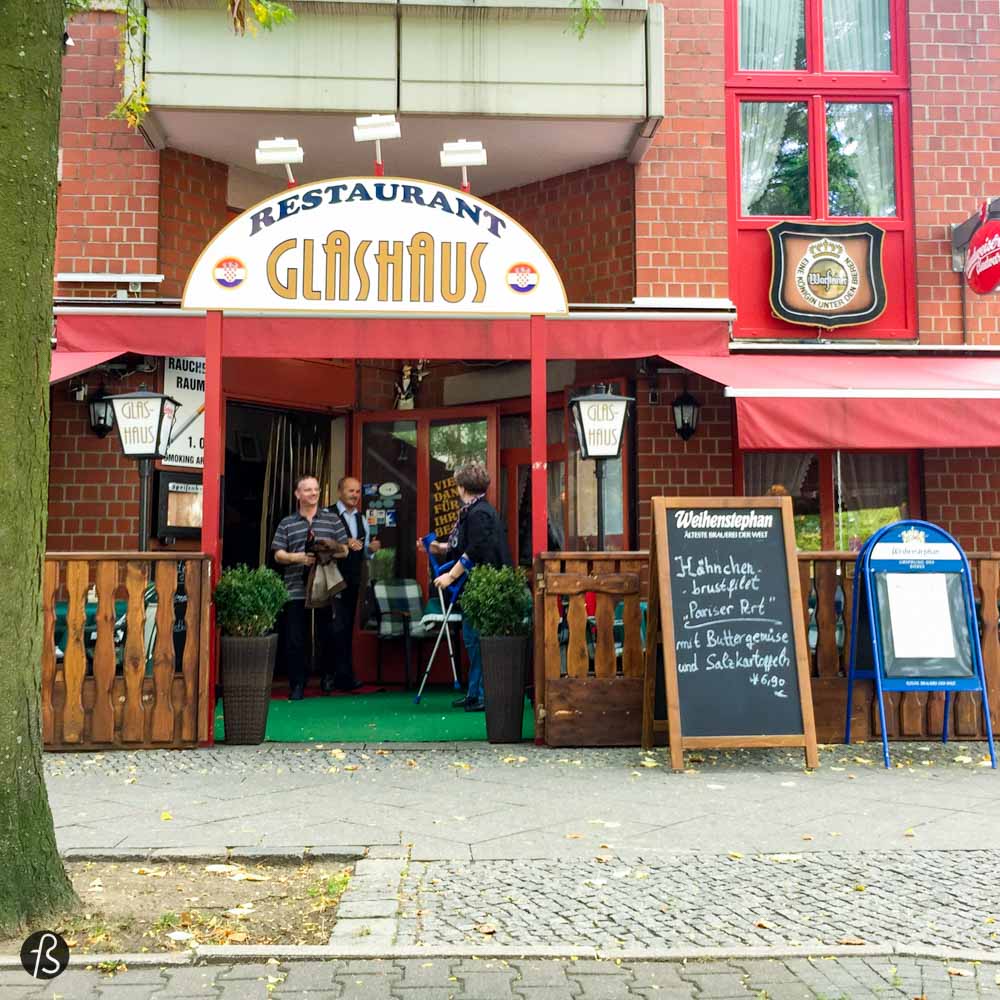
From the outside, you would never imagine how great this place is. So, don’t think twice and go have lunch at Glashaus. But prepare yourself because the portions are huge!
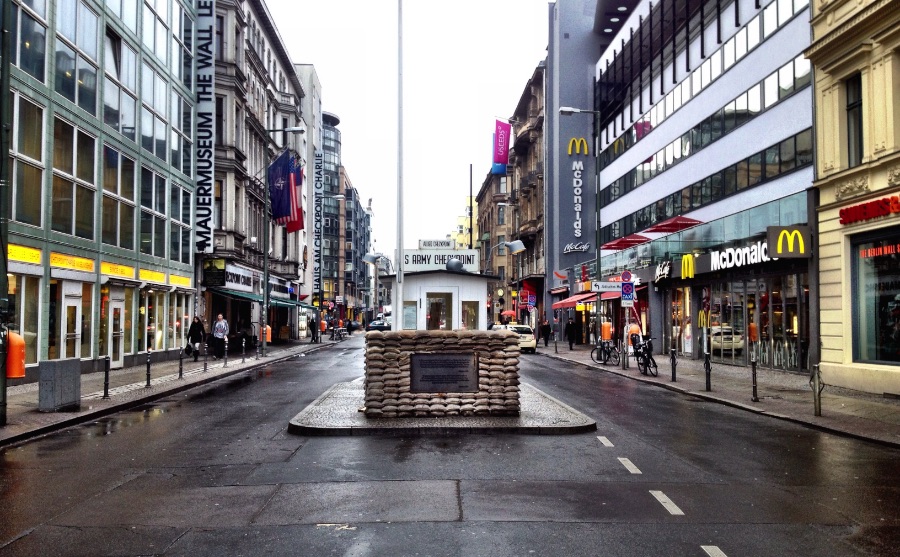
As you can see, there are many things to be done around Checkpoint Charlie. And most of them are better than seeing this tourist trap in the middle of Berlin. But, if you have to go there, follow our tips above and try to have a nice time.
